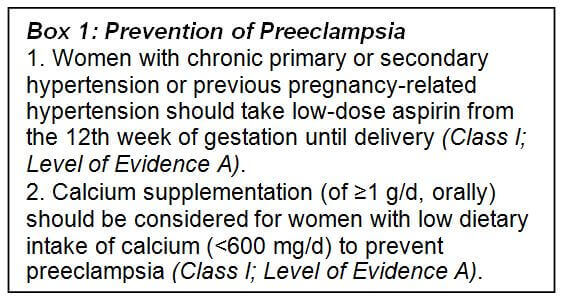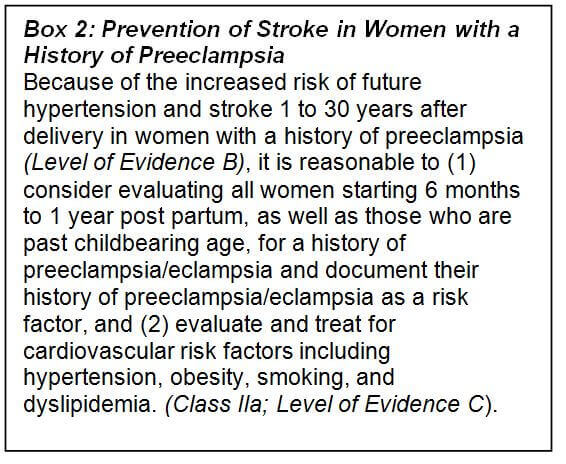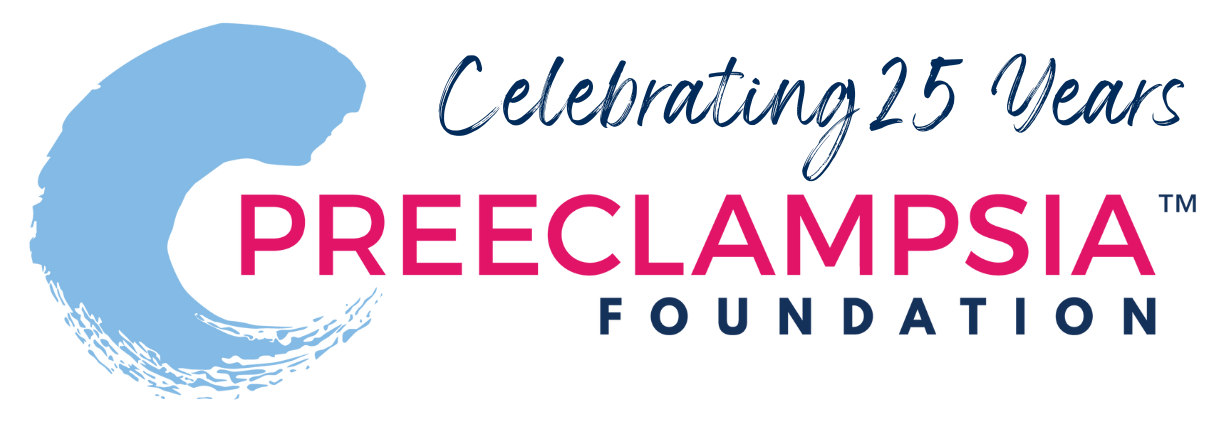
Preeclampsia Doubles Women's Stroke Risk
The estimated 7 million women in the United States today who experienced a hypertensive disorder of pregnancy should be aware of new guidelines for preventing stroke in women from the American Stroke Association and American Heart Association. We have known for many years that a history of preeclampsia during pregnancy puts women at greater risk for future high blood pressure, but continuing research shows that the impact may extend to stroke risk as well.
In the U.S., stroke is now more common in women than men, with more than half of the 795,000 strokes that occur each year happening to women. The disease is also more deadly in women, with about 60 percent of stroke deaths happening in female patients.
"Guidelines for the Prevention of Stroke in Women - A Statement for Healthcare Professionals" from the American Heart Association and American Stroke Association were issued last week. These first-time-ever guidelines, similar to a 2011 publication by the American Heart Association, declared preeclampsia as a significant risk factor for heart disease and stroke. This paper suggested preeclampsia survivors have double the risk of having a stroke and those who de
The guidelines went even farther to recommend interventions to prevent preeclampsia, in the hopes that improved pregnancy outcomes would lower a woman’s risk of stroke. Low dose aspirin and calcium were suggested. [see Box 1] In other research, both of these interventions get mixed reviews, although the former has now been included in the 2013 Hypertension in Pregnancy Guidelines issued by the American College of Obstetricians & Gynecologists. Other research studies on calcium have only found an effect in populations that are calcium-deficient, generally not a problem in the U.S.
Nonetheless, an important part of the conclusions were the recommended follow up actions (see Box 2) which include evaluation and treatment of risk factors as soon as six months after delivery. The ASA guidelines recommend that women with a history of preeclampsia be screened and treated for high 
- Early identification of risk
- Prevention of seizures (eclampsia)
- Control of blood pressure
- Delivery when the magnitude of maternal risk exceeds the interests of the fetus in-utero
- Aggressive postpartum management of fluid status and hypertension
- Surveillance and risk intervention among women affected by preeclampsia as they age
"As advocates for women's health and especially for greater awareness of preeclampsia, we applaud this expression of heightened concern and hope this will lead to much needed research into the cause of preeclampsia and novel treatments," said Eleni Tsigas, Executive Director of the Preeclampsia Foundation. "We are working with a small, but growing body of healthcare providers interested in improving long-term health outcomes for preeclampsia survivors."
For more information, read this blog article.
Related Articles

Your story is needed to improve outcomes for moms like you. Add your voice to critical preeclampsia research to ensure that every story is heard.

Frequently asked questions about the Preeclampsia Registry, a patient-driven registry and biobank.

The Preeclampsia Foundation offers research funding, study recruitment, and other patient engagement services to researchers.

We provide research grant funding to advance progress towards detection, prevention, or treatment of preeclampsia, HELLP syndrome, and other hypertensive disorders of pregnancy.

Hypertensive disorders of pregnancy significantly increase your risk of developing long-term heart problems. A careful review of blood pressure elevations during and after pregnancy may assist in iden...

Hypertensive disorders of pregnancy (HDP) can affect different groups of women in different ways, and even though we know this happening, we don't fully understand why. There are many factors, like bi...

There is growing evidence that studies examining pregnancy and its complications need to start early within the pregnancy to fully understand the nature of preeclampsia. Key gestational milestones, wh...

It is known that chronic hypertension and high BMI (body mass index) are risk factors for hypertensive disorders of pregnancy (HDP). Studies documenting this risk have usually assessed blood pre...

Several biomarker tests are under development to predict or diagnose preeclampsia. While none of these tests are yet widely accepted in U.S. clinical practice, two FDA-approved tests are available in...

